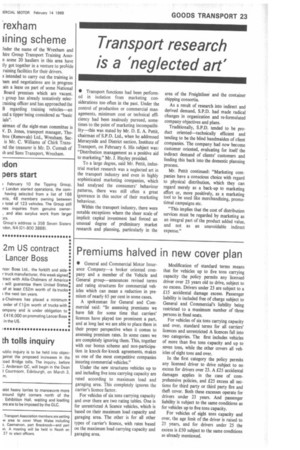Transport research is a 'neglected art'
Page 25

If you've noticed an error in this article please click here to report it so we can fix it.
• Transport functions had been performed in isolation from marketing considerations too often in the past. Under the control of production or commercial managements, minimum cost or technical efficiency had been zealously pursued, sometimes to the point of marketing incompatibility—this was stated by Mr. D. E. A. Pettit, chairman of S.P.D. Ltd., when he addressed Merseyside and District section, Institute of Transport, on February 6. His subject was: "Distribution management as a positive aid to marketing." Mr. J. Hayley presided.
To a large degree, said Mr. Pettit, industrial market research was a neglected art in the transport industry and even in highly sophisticated marketing companies, which had analysed the consumers' behaviour patterns, there was still often a great ignorance in this sector of their marketing behaviour.
Within the transport industry, there were notable exceptions where the sheer scale of implicit capital investment had forced an unusual degree of preliminary market research and planning, particularly in the area of the Freightliner and the container shipping consortia.
As a result of research into indirect and derived demand, S.P.D. had made radical changes in organization and re-formulated company objectives and plans.
Traditionally, S.P.D. tended to be product oriented—technically efficient and tending to be the blind handmaiden of client companies. The company had now become customer oriented, evaluating for itself the indirect demand of clients' customers and feeding this back into the domestic planning process.
Mr. Pettit continued: "Marketing companies have a conscious choice with regard to physical distribution, which they can regard merely as a back-up to marketing effort or, more positively, as a marketing tool to be used like merchandizing, promoticinal campaigns etc.
"This implies that the cost of distribution services must be regarded by marketing as an integral part of the product added value, and not as an unavoidable indirect expense."


















































































































